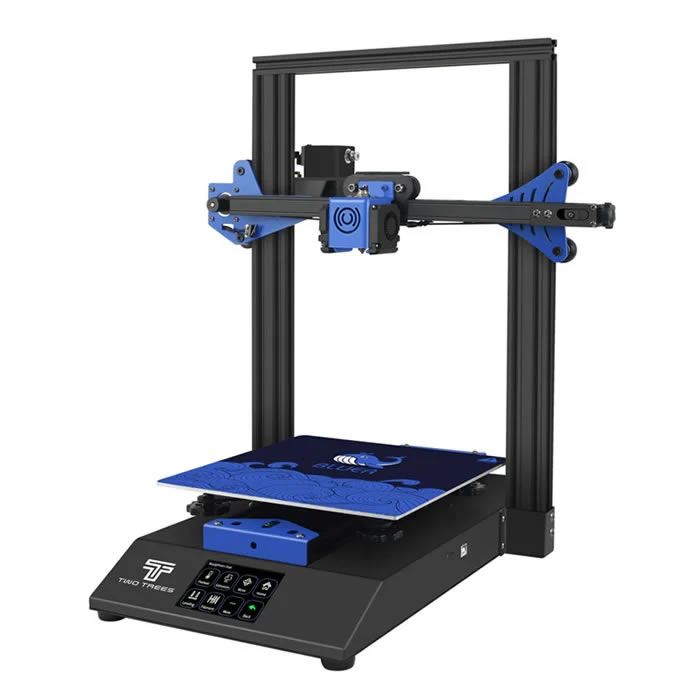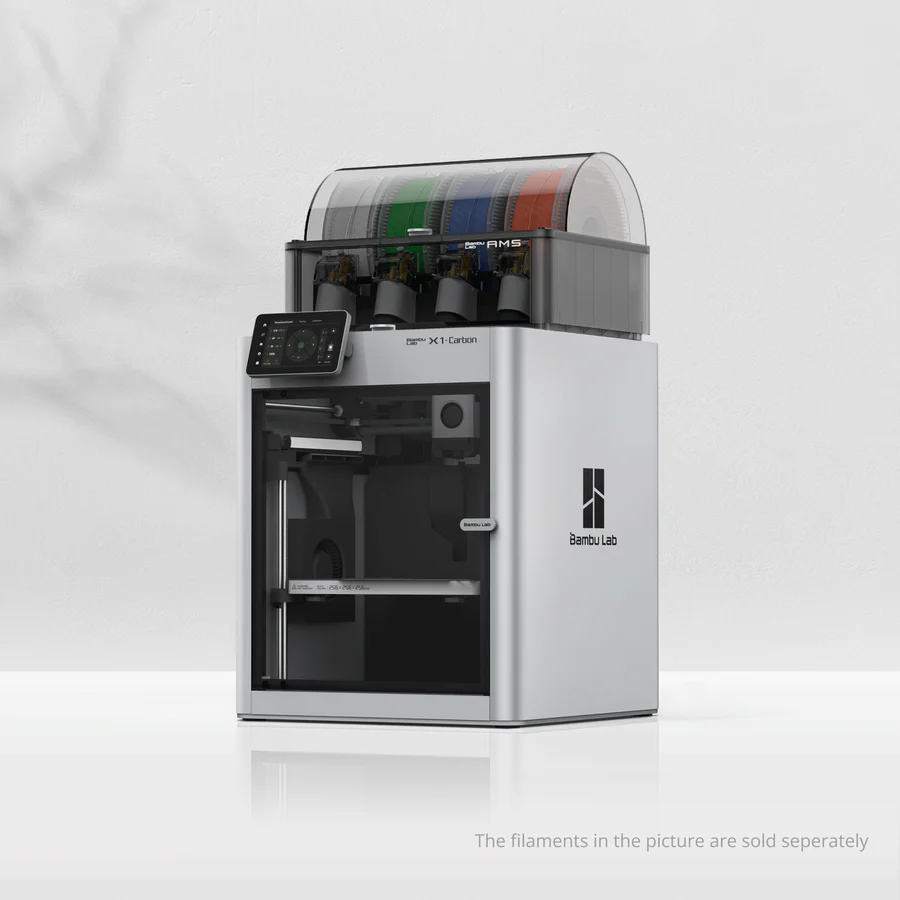Compare Bluer vs X1 carbon
Comparison between the best 3D printers
Choose the best 3D printer at the best price. The cheapest 3D printers are here.
Buy a 3D printer here with 3D Fila.
 |
 |
|
| Model | Bluer |
X1 carbon |
| Printing Material | Filament | Filament |
| Buy Filament for TwoTrees Bluer | Buy Filament forBambu Lab X1 carbon | |
| Estimated price | $169,00 | $1449,00 |
| Manufacturer | TwoTrees | Bambu Lab |
| Release Year | 2019 | 2023 |
| Print Volume [mm] | 230x230x280 | 256x256x256 |
| Printer Size [mm] | 400x410x520 | 389x389x457 |
| Weight [kg] | 8 | 14,13 |
| Power Loss Recovery | YES | YES |
| Enclosed printer | NO | YES |
| Bed Leveling | Manual | Automatic |
| Filament End Sensor | YES | YES |
| Bed type | Heated | Heated |
| Power supply system | Bowden | Direct Drive |
| Standard nozzle | 0,4 | 0,4 |
| Maximum Nozzle Temperature [°C] | 260 | 300 |
| Maximum Bed Temperature [°C] | 100 | 120 |
| Maximum printing speed [mm/s] | 200 | 500 |
| Filament holder | YES | YES |
| Camera for supervision | NO | NO |
| Recommended filaments | PLA, PETG | PLA, PETG, TPU, PVA, PA, PA-CF, Nylon, PC |
| Recommended slicers | Cura, Simplify, Slic3r | Bambu Studio, Super Slicer, Cura, Prusa Slicer, Orca |
| Maximum Resolution [mm] | 0,1 | 0,1 |
| Processor | MKS Robin Nano V1.2 + TMC2208 | Quad ARM A7 1.2 GHz |
| Display | Touchscreen TFT 3,5'' | Touchscreen 5'' |
| Power Supply | 240W | 350 W |
| Connectivity | SD / USB | Wifi, Bambu bus, Cartão SD |
| Operating systems | Windows, Mac, Linux | Windows, Linux, Macbook |
| Date of registration in the system | 2021-09-20 | 2024-04-10 |
| Release date | 2019 | 2023 |
| Extra features | The Bluer offers interesting features such as automatic bed leveling, a 3.5-inch color touchscreen for easy operation, and a filament sensor to prevent print failures. It has a robust metal extruder and a generous 230 x 230 x 280 mm print volume, suitable for a variety of projects. The community mentions improvements made by Two Trees based on feedback, increasing its reliability. | The Bambu Lab X1 Carbon revolutionizes 3D printing with stunning design, high print speeds, and a streamlined user experience. It stands out with its CoreXY system, a hotend capable of reaching 300°C, allowing for a wide range of filaments. Its LiDAR-assisted bed leveling system, vibration compensation, and AMS multicolor printing capability raise the industry standard. Print quality is impressive, with the ability to fine-tune for perfection. The X1 Carbon, with its closed build volume, not only promises but also delivers one of the most advanced 3D printing experiences available to consumers. |
| Support for multiple colors and materials (AMS and CFS) | NO | YES |
Notes * |
||
| Cost-benefit | 7 / 10 | 7 / 10 |
| Hardware | 2 / 10 | 6.4 / 10 |
| Tela | . | . |
| Print volume | 3 / 10 | 4 / 10 |
| Performance | 1 / 10 | 4 / 10 |
Conclusion |
| In conclusion, the comparison between the TwoTrees Bluer and the Bambu Lab X1 Carbon highlights a distinct divide between budget-friendly options and high-end features in 3D printing technology. The TwoTrees Bluer, priced significantly lower, caters to hobbyists and users seeking an affordable entry point into 3D printing. While it offers a decent print volume, heated bed, and essential features such as power loss recovery and a filament end sensor, it lacks advanced functionalities like an enclosed build chamber and automated bed leveling. Its lower maximum print speed and limited filament compatibility may restrict its versatility for more demanding projects. On the other hand, the Bambu Lab X1 Carbon, though a considerable investment, is designed for serious enthusiasts and professionals who require superior performance and versatility. Its advanced features, including automatic bed leveling, faster print speeds, wide filament compatibility, and a closed design, significantly enhance the user experience and print quality. The incorporation of modern technologies like LiDAR assists in precise leveling and configuration, asserting the X1 Carbon as a frontrunner in the current 3D printing market. Ultimately, the choice between these two printers depends on the user's needs and budget. The Bluer provides a commendable cost-to-benefit ratio for casual users, while the X1 Carbon offers a comprehensive suite of features for those willing to invest in cutting-edge technology and improved performance. |

